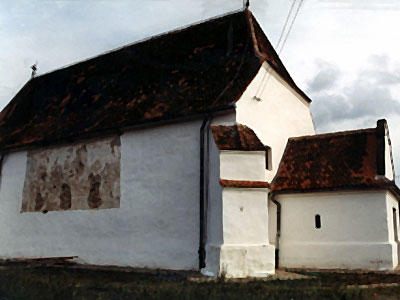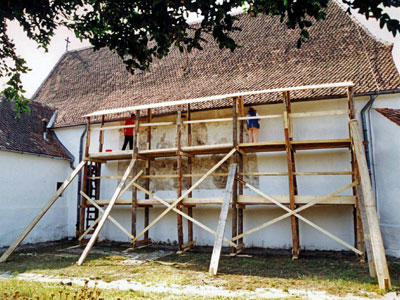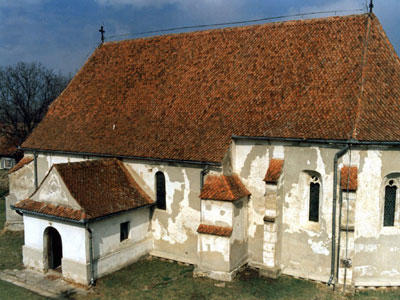The Romano Catholic Church of Saint Emeric was built in the thirteenth century by the first Christian settlers in present day Ghelinta. The stone church has a painted wooden ceiling and its walls are decorated with Gothic murals. Various interventions and transformations took place during the sixteenth, seventeenth, and eighteenth centuries. Layers of architectural history are visible in the church’s Gothic, Renaissance, and baroque elements. The stability of the structure’s framework had been threatened by earthquakes, and the murals and painted ceiling were damaged by condensation from humidity, as well as from rain leaking through the roof. The decorations, including the wooden altars, stone windows, and interior and exterior murals were in poor condition and in need of restoration.
1996 and 1998 World Monuments Watch
After appearing on the World Monuments Watch in 1996 and 1998, WMF, through the Samuel H. Kress Foundation, supported a conservation study in 1999, and the following year contributed to the conservation of the murals, which had been covered in mortar, lime, and whitewash. The vibrant colors had faded and the surface of the paintings had eroded and warped. Biological growth and salt efflorescence covered sections and further damaged the murals. Inadequate mortar, salt, and lime were removed from the painted surfaces and treatments were applied to the algae and moss threatening the integrity of the decorative campaigns.
The Church of Saint Emeric is representative of the region’s architectural heritage and the surrounding community has a strong attachment to the building. The original mural paintings are a significant part of the cultural history of Ghelinta and their conservation ensures that future generations of locals and visitors will be able to enjoy them.



